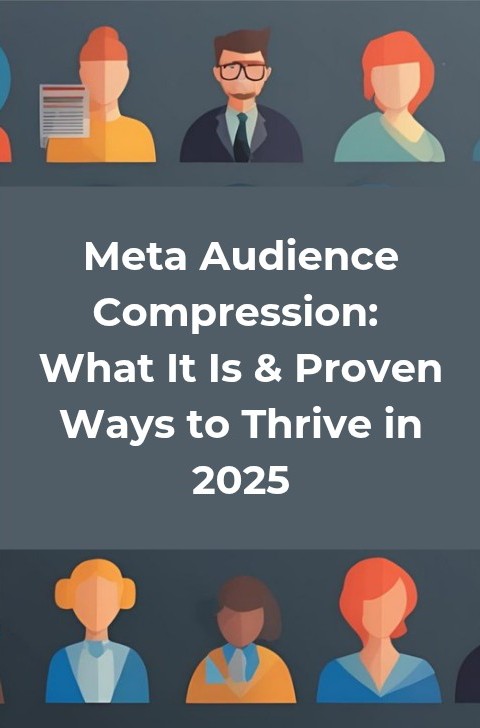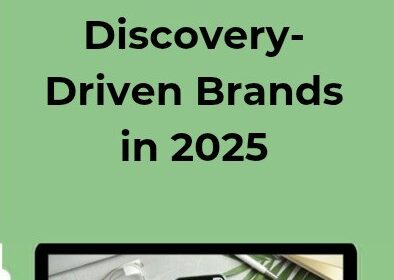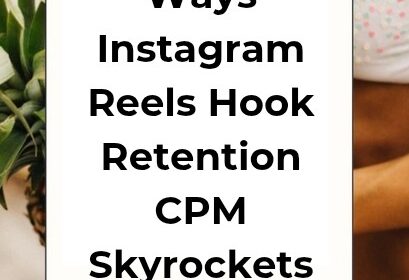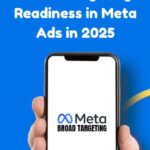For years, advertisers on Meta had one reliable advantage: precision.
You could carve out hyper-specific audiences, stack interests like LEGO bricks, and feel confident your ads were reaching exactly the people you wanted.
But that era is fading fast.
Meta’s algorithm has quietly shifted the entire playing field, blending interests, collapsing segments, and pushing advertisers into broader targeting whether they like it or not.
This shift—known as Meta Audience Compression—isn’t some small tweak buried in a changelog.
It’s a full-on rewrite of how campaigns are delivered, optimized, and scaled. And it’s catching a lot of marketers off guard.
Yet, despite the frustration, there’s a silver lining: those who understand why it’s happening can adapt faster than the rest.
With the right meta audience compression strategies for advertisers, you won’t just survive the change—you can actually outperform competitors who are still clinging to the old playbook.
What Is Meta Audience Compression?
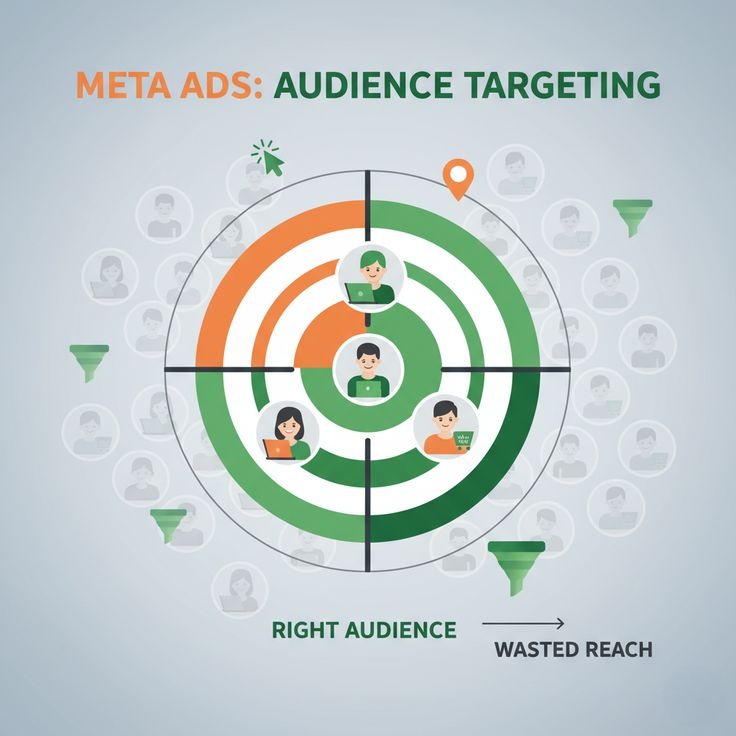
Meta audience compression refers to the process by which Meta (formerly Facebook) is significantly reducing the granularity of its ad targeting options.
This isn’t just a minor tweak — it’s a major restructuring of how advertisers can define, exclude, and reach audiences.
Over time, detailed targeting options (interests, behaviors, demographics) are being scaled back or consolidated.
The rationale Meta gives is that by consolidating these granular criteria, its AI systems can take over more of the audience shaping.
Rather than relying on manually selected interests or behaviors, advertisers are being nudged to rely on broader targeting strategies — letting Meta’s machine learning optimize ad delivery.
At its core, meta audience compression reflects a shift: from human-driven audience design toward algorithmic audience discovery.
This means that common tactics like excluding specific groups or layering very narrow interest combinations are becoming less effective or, in some cases, unavailable.
For advertisers, this change can feel jarring. Many have built campaigns around hyper-specific segments, thinking they could squeeze out efficiencies by micromanaging who sees their ads.
But with detailed targeting exclusions being removed — a change Meta implemented in early 2025 — those strategies no longer work the same way.
Some suspect this is part of Meta’s monetization play: by compressing audiences, more advertisers are forced into broader, more competitive pools, which could drive up bid prices and overall ad spend.
Others see it as a natural evolution: as privacy pressures grow and AI improves, granular manual targeting becomes less sustainable or useful.
Either way, the shift means one thing for marketers: you need to rethink how you define and reach your audiences.
Importantly, meta audience compression is not just a cosmetic change — it’s structural.
This isn’t about tweaking budgets; it’s about how campaigns are built, optimized, and scaled in a fundamentally different ad ecosystem.
For 2025 and beyond, success on Meta means leaning into the AI-first mindset, trusting broad signals, and designing for the long game.
Why Meta Audience Compression Is Happening
There are several driving forces behind this shift toward meta audience compression.
#1. Privacy and Regulatory Pressures
Modern privacy norms and regulations are limiting the use of highly granular user data.
As third-party data sources shrink, platforms like Meta are under pressure to minimize how much they expose or rely on fine-grained behavioral targeting.
That makes “old school” targeting less viable, pushing the system toward broader patterns.
#2. Meta’s Bet on AI
Meta is doubling down on its AI-driven targeting capabilities.
With industry updates showing that its AI models can identify which users are likely to convert — even without detailed exclusion settings — Meta is reducing the burden on advertisers to micromanage audiences.
By removing many manual targeting options, Meta nudges marketers to lean more on automated systems like Advantage+ and broad audiences.

#3. Efficiency Gains
Meta claims its AI performs better when not restricted by overly specific targeting.
In some of its own tests, the consolidation of detailed targeting led to a decrease in cost per conversion (CPA) — improvements of up to 22.6% in some cases.
When the algorithm has more freedom, it can explore more efficient delivery paths, discovering pockets of high-intent users that manual targeting might never reach.
#4. The Death of Exclusions
One of the more controversial changes: Meta removed or drastically limited detailed targeting exclusions starting January 2025.
This change means advertisers can no longer exclude as many interest-based or demographic segments as before.
That shift reduces the ability to narrowly define who shouldn’t see your ads — a core playbook tactic for precise campaign delivery.
#5. Scale and Monetization
By shrinking or compressing audience segments, Meta can encourage more advertisers into shared, broader pools.
That creates more competition in auctions, which helps Meta monetize more effectively.
Some marketing veterans suspect this is a strategic move — not just a technical one — by Meta to boost ad spend and keep its auction system healthy.
#6. Algorithmic Bias and Efficiency Trade-Offs
Behind the scenes, Meta is wrestling with algorithmic fairness and bias.
Recent academic work highlights challenges, including how ad delivery systems might inadvertently introduce discrimination or inefficiencies.
By reducing manual control and centralizing targeting decisions through AI, Meta may be trying to standardize delivery while also managing cost and regulatory risk.
All that means: meta audience compression isn’t accidental. It’s a deliberate evolution rooted in privacy, AI, and revenue strategy.
Advertisers who understand why it’s happening have a better shot at not just adapting, but thriving.
The Impact of Meta Audience Compression on Advertisers
The shift caused by meta audience compression has a variety of real-world implications for advertisers — both challenges and opportunities.
#1. Reduced Granularity = Less Precision
Because detailed targeting options are being consolidated or removed, many advertisers no longer have fine-tuned control over who sees their ads.
For niche brands or B2B businesses that used to rely on hyper-specific interest layering, this can lead to audience dilution.
Your carefully constructed audience of “young professionals interested in sustainable fashion” might get merged into a broader pool, reducing the precision of your reach.
#2. Higher Costs
With less granular targeting, there’s a higher chance that ads will compete in broader auction pools, potentially raising the cost per mille (CPM) or CPA.
In fact, some reports show that Meta CPMs increased by around 11% in Q1 2025 due to higher competition and less efficient segmentation.
For many advertisers, this means budgeting more or rethinking how to get the same ROI given steeper delivery costs.
#3. Learning Phase Complexity
When ad sets rely on broad targeting with automated optimization, each new campaign or creative variation can re-trigger the learning phase.
Because Meta’s AI needs data to optimize, poorly structured campaigns or frequent changes (like budget jumps) can disrupt learning.
That makes scaling riskier and slower, especially if your conversion volume is low.
#4. Audience Saturation Risks
If many advertisers are funneling into similar broad segments, audiences can saturate more quickly.
That increases frequency and potentially reduces ad efficiency unless creatives are refreshed more often or targeting is diversified.
#5. Less Control Over Exclusions
Without the ability to exclude certain interests or demographics as granularly as before, you may see your ads served to less-relevant users or groups.
This shift can increase wasted spend or push you to rely more on creatives and exclusions based on conversion data rather than manual targeting logic.
#6. Ethical & Compliance Risks
Meta’s more automated delivery opens up concerns around algorithmic bias and discrimination.
Academic studies show that even with systems designed to mitigate disparity, ad delivery may still disproportionately reach certain groups, transferring costs to advertisers.
Advertisers therefore need to be more intentional about monitoring performance and ensuring their campaigns align with equity goals.
#7. Opportunity: Scale & Efficiency
On the flip side, meta audience compression can unlock scale.
Broad, well-structured audiences paired with predictive AI can help deliver conversions at scale if campaigns are built correctly.
AI-driven optimization reduces reliance on manual targeting, freeing teams to focus on creative, messaging, and funnel structure.
#8. Opportunity: Simplified Account Structure
With fewer granular options, you can simplify your ad account setup.
Rather than dozens of micro-segmented ad sets, you can lean into broader audiences and let Meta’s system do the optimization heavy lifting.
This simplifies scaling, testing, and campaign re-allocation.
#9. Opportunity: Better Use of First-Party Data
As manual targeting becomes less precise, first-party data (email lists, app users, website visitors) becomes more valuable.
Clean, high-quality data feeding into Meta (via Customer Lists, Lookalikes, or Conversion API) can help power the algorithm in lieu of interest-based signal.
In short: meta audience compression shifts the risk landscape. While it reduces manual control, it also centralizes ad performance around algorithmic optimization.
Advertisers who don’t adapt risk higher costs, worse performance, and wasted spend — but those who lean into the change can discover more efficient scaling paths.
Proven Ways to Thrive Despite Meta Audience Compression
Here are seven actionable strategies to help you adapt and succeed under meta audience compression.

#1. Embrace Broad Targeting + Advantage+ Campaigns
One of the most effective ways to respond to audience compression is to lean into broader targeting — not fight it.
Rather than painstakingly slicing audiences by tiny interest groups, use Meta’s Advantage+ (or similar AI-driven campaign structures) to give the algorithm room to optimize.
Meta itself encourages this, noting that broad targeting helps its AI systems find the right users more efficiently.
Marketers using broad audiences have reported lower cost per acquisition (CPA) and stronger returns, especially when combined with clean event data and a well-setup Conversion API.
By handing control back to Meta’s machine learning, you can circumvent the limitations of compressed interests and let the system find hidden pockets of high-intent users you might not have identified manually.
#2. Leverage First-Party Data Heavily
As detailed targeting options shrink, first-party data becomes your secret weapon. Use your customer lists, website traffic, and app usage to build custom audiences.
These are far more reliable than interest-based segments, especially in a compressed targeting environment.
Upload your CRM contacts into Meta, create lookalike audiences from your most valuable users, and retarget based on actual behavioral signals.
This strategy ensures you’re working with real people who have previously engaged with your brand — not just broad, potentially irrelevant categories.
Additionally, integrating Conversion API improves data quality by sending server-side data (purchases, events) directly to Meta.
Clean, accurate signal feeds into the algorithm help it optimize more effectively, reducing reliance on crushed interest targeting.
As one source notes, using broad audiences with solid event data can drive better efficiency.
By prioritizing first-party data, you align with Meta’s strategic direction while maintaining control over your audience foundation.
#3. Refresh Creatives Frequently
With broader targeting and algorithm-driven delivery, creative fatigue becomes a bigger risk.
Because you’re casting a wider net, you need to maintain relevance and engagement through ads that feel fresh and tailored.
Rotate creatives every few weeks. Use a mix of formats — Reels, Stories, static images, carousels.
Leverage Meta’s Dynamic Creative Optimization (DCO), which can auto-generate personalized combinations for Stories and Reels using generative AI.
Strong hooks, different angles, and varying CTAs help you stay relevant within your audience. AlmostZero.io recommends rotating creative often, since stale ads are a “silent killer.”
Also, test different messaging themes. Since you don’t control targeting as granularly, messaging becomes more important in steering who engages and converts.
Use variation strategically, then monitor performance to identify what resonates most across your broader audience.
#4. Monitor and Manage Learning Phases
Every time you change major campaign elements — budget, creative, targeting — Meta’s algorithm may re-enter a learning phase. This can degrade performance if not managed carefully.
To navigate this: scale gradually, not aggressively. LinkedIn marketers suggest increasing your budget by 20–30% every few days rather than making huge jumps.
Also, avoid making too many changes at once. When you tweak your campaign, give Meta time (and events) to re-optimize.
Be especially cautious right after launching broad-targeting campaigns — they may need more conversion volume to stabilize.
Use automated rules where possible to pause or adjust ad sets that stray from your performance targets.
That way, you preserve focus on what works while giving Meta’s system room to learn. The goal is to balance stability and flexibility — letting AI optimize, but not letting drastic changes reset momentum.
#5. Negotiate and License UGC
User-generated content (UGC) gains outsized importance in a compressed audience environment.
When you use UGC, you tap into authenticity — and with less audience control, trust becomes a key differentiator.
Secure multi-month usage rights when you work with creators. That way, you can repurpose high-performing assets across placements (Reels, Stories, feed) without re-running the same campaign.
This reuse reduces creative production costs and maximizes the lifespan of effective content.
Plus, UGC resonates in a broader context because it feels more genuine to a wide range of viewers rather than a narrowly targeted group.
By negotiating creative licensing upfront, you turn individual pieces of content into scalable assets.
This helps you stretch your ad dollars and ensures consistent performance over time — even as Meta audience compression eats away at micro-segmentation.
#6. Use Predictive Forecasting and Scenario Planning
Given the uncertainty introduced by meta audience compression, it pays to forecast more rigorously.
Use Monte Carlo simulations or scenario planning to model expected CPA, conversion volume, and ROAS under different conditions.
Feed your historical campaign data into simulation tools — variation in creative performance, budget shifts, or audience saturation — to generate best-case, base-case, and worst-case outcomes.
These models can help you structure deals (if working with creators or publishers) with performance incentives.
They also allow you to set budget thresholds tied to real risk: if performance drops below a certain point, you trigger rules or pause scaling.
Brands that forecast before launch report significantly fewer budget overruns, aligning expectations with finance teams and reducing surprises when actuals roll in.
This forward-looking discipline helps you stay resilient even as audience dynamics compress and delivery becomes less predictable.
#7. Monitor Equity, Bias, and Delivery Quality
With compressed targeting and automated delivery, algorithmic fairness matters more than ever.
Studies show that even with systems meant to reduce discrimination, ad delivery can remain skewed, with some groups seeing fewer or more expensive impressions.
To maintain ethical ad delivery — and improve ROI — continuously audit performance by demographic segments (if allowed) or by proxy signals.
Look for disparities: are conversion rates, costs, or reach significantly different across regions, gender, or other behaviors?
Use more transparent AI where possible. Research into explainable AI is already being applied to ad delivery systems, helping marketers understand why certain users are being targeted.
Additionally, incorporate external evaluation. Third-party tools or academic frameworks can help assess whether your campaign delivery is equitable.
Over time, this not only protects your brand but helps you refine your audience strategies in a more data-responsible way.
In an era of meta audience compression, performance isn’t just about scale — it’s also about delivering fairly, efficiently, and sustainably.
How to Measure Success When Facing Meta Audience Compression
To evaluate how well you’re adapting to meta audience compression, you need to monitor the right metrics and set realistic KPIs.
#1. Conversion Metrics Over Vanity Metrics
With less precise targeting, surface-level KPIs like CTR and reach matter less than conversion-related metrics.
Focus on cost per acquisition (CPA), return on ad spend (ROAS), and value per conversion. These indicate whether your campaign is cutting through broad audiences effectively.
#2. Audience Efficiency
Track how efficiently your broad campaigns are delivering conversions.
Compare groups by how they were initiated (e.g., lookalike vs first-party) and monitor how delivery shifts over time.
If conversion volume remains stable and CPA is acceptable, your broad targeting strategy is working.
#3. Creative Performance
Since creative freshness is essential, monitor how different formats and messaging themes perform.
Use performance breakdowns to see which creatives are driving the best ROI. This helps you decide which assets to double down on or license longer.

#4. Learning Phase Indicators
Keep an eye on how quickly campaigns exit the learning phase after major changes.
If your experiments don’t stabilize or continually reset, it signals that the structure or data feeding into the algorithm may need adjustment.
#5. Equity & Bias Monitoring
If possible, segment performance data by demographics or proxies (region, device, time of day) to identify potential bias or unequal delivery.
Unequal performance may suggest the algorithm is favoring certain subsets disproportionately — a structural risk worth addressing.
#6. Forecast vs Reality
If you use predictive forecasting, compare your simulation outputs to actual performance.
Track where projections and real results diverge most — and learn why.
This feedback loop sharpens your modeling and improves future planning.
#7. Lifetime Value (LTV)
Because compressed targeting may reduce short-term precision, assessing customers’ long-term value becomes more important.
Use data from CRM systems to track repeat purchases, churn, and retention. High LTV can justify broader, less precise acquisition strategies.
By focusing on these metrics — not just surface-level engagement — you can assess whether your adapted campaigns are navigating meta audience compression successfully and delivering sustainable business outcomes.
Conclusion
Meta audience compression represents a transformational shift in how ad targeting works on Meta’s platforms.
No longer can advertisers rely solely on granular interest layering or manual exclusion.
In 2025 and beyond, success will increasingly depend on trusting Meta’s AI, leaning into broad targeting, and building campaigns that are resilient, data-backed, and creatively flexible.
The seven strategies outlined above offer a roadmap for thriving rather than just surviving.
As you adapt, the key mindset change is this: stop trying to micromanage who sees your ad, and start empowering Meta’s algorithm to do the heavy lifting.
With clear event data, strong creatives, and a thoughtful approach to scaling, you can harness meta audience compression to find performance opportunities you never accessed before.
The world of Meta advertising is evolving fast. But for those who lean into change — not resist it — there’s real, scalable growth to be unlocked in this new era.

